Hamilton’s bullying crisis
An Ontario city looks for answers after 14-year-old Devan Selvey was stabbed in front of his mother on school grounds
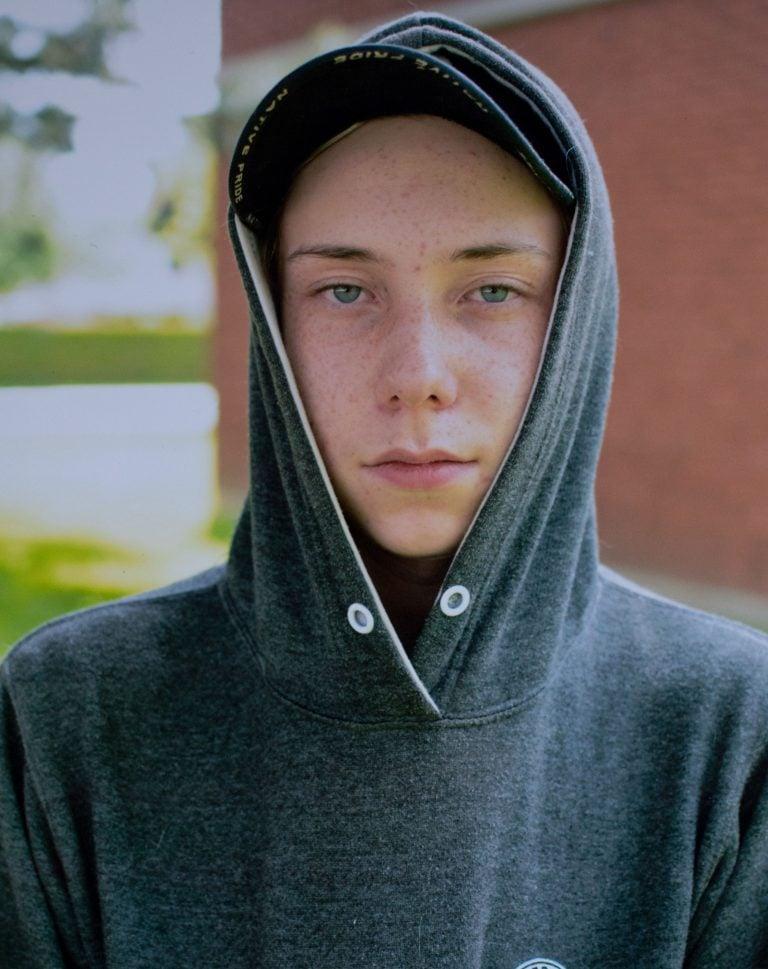
Selvey in the spring of 2019, just before graduating from grade eight (Photograph by Chloë Ellingson)
Share
Editor’s note: This story was first published in print on Thursday, March 5, 2020, just before the coronavirus pandemic overturned our lives. The story was not published online at the time, but we felt it was important that Devan Selvey be remembered on the anniversary of his death, so we are releasing it online now. Some elements of the story have changed since publication; in particular, the 18-year-old originally charged with Selvey’s murder has been sentenced to 15 months of probation.
Devan Selvey couldn’t wait for high school to start last September. It was going to be, as they say, a fresh start. School had never been his favourite place, but at Sir Winston Churchill Secondary, a few blocks from his house in east Hamilton, Ont., he could enter a co-op program where he’d learn to fix cars. He’d always loved cars—classic cars, new ones, all kinds of cars. Even as a three-year-old, when his mom, Shari-Ann, would work on vehicles with her dad, he would offer to help. “You’re too little, buddy,” she’d say, but then she would still lift him up and let him watch what they were doing. When he grew up, he said, he was going to be an auto mechanic.
He also loved Call of Duty, food and animals. He would dig up the weirdest dishes he could find on YouTube, and with Shari-Ann’s help, cook them for his family. One of his favourite restaurants was the Bedrock Bistro, a Flintstones-themed café at the corner of Parkdale and Queenston. Shari-Ann volunteered at an animal rescue, and Devan often helped her transport cats and dogs to foster homes. Their own three-bedroom house was crowded with cats (two) and dogs (four, including Devan’s black and big-eared mutt, Prince). When they went walking along the trails near the Royal Botanical Gardens, birds and chipmunks would feed from his hand. Shari-Ann called him a tree hugger, and it was true in a very literal sense—when he was a toddler, he would go up to trees and embrace them.
He had a girlfriend and she was going to go to Churchill, too. He’d met Danielle in Grade 8. She thought he was quiet and sweet, and, because he didn’t seem to have many friends, she became his friend. They adored each other. Though Devan and Danielle were young—he was 14, and she a year younger—they often talked about the kids they would have. Devan dreamed of having a girl, and he wanted to name her Rose. His older sister, Karissa, was about to have a baby, and he was thrilled about being an uncle. Like any teenager, Devan could be sullen and a smart-ass, but Danielle, his family said, brought out his best self—tender, affectionate and thoughtful.
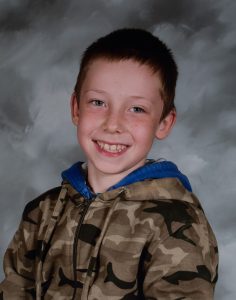
He’d almost always had trouble at school, though. Devan’s birthday was Jan. 1; he was usually one of the older and taller kids in his class. Kids teased him, called him stupid, saying he should be in higher grades. In Grade 2, an abusive teacher made him work on the floor, saying he didn’t deserve a desk. Marching him one day to the principal’s office, she left bruises on his arm, and from then on, he didn’t trust female teachers. He got into fights. In Grade 7 alone, Shari-Ann said, he received four concussions. Everyone hoped Churchill was going to be different but they also knew that Churchill was an unlikely haven. When Karissa went there, 10 years earlier, she’d been bullied mercilessly. Physically, she was beaten; on Facebook, taunted and told she should kill herself. At one point, as she was being chased through the school’s hallways, a teacher locked Karissa in her classroom to protect her. After Shari-Ann confronted the mother of one of Karissa’s antagonists, the mother’s response was equally antagonistic: “Well, what did Karissa say to her to make her do that?”
On Devan’s second day at Churchill, Shari-Ann said, “Everything went to hell.” A group of kids stole his bike and one punched his best friend in the face. For weeks, they harassed and taunted him. The kids that were picking on him, Danielle said, were the popular kids, the kids on the hockey and football teams, and they picked on Devan because he was poor, because he didn’t wear branded clothing, because he smelled bad—like a dog. Soon, he stopped going to school. Shari-Ann complained to the vice-principal repeatedly but fruitlessly. Shari-Ann says he told her she needed to get Devan to improve his attendance. They finally came up with a safety plan for him that Shari-Ann felt only punished Devan: he shouldn’t be in the bathroom or hallways by himself; he had to leave school early every day and Shari-Ann had to pick him up; he shouldn’t go to the Tim Hortons or the skatepark. According to Shari-Ann, the police weren’t much help either—even after one of the boys told Devan on Instagram that they were going to lop his head off and make Shari-Ann watch. Devan started carrying a pocket knife for protection.
Shari-Ann had been told by police that the bike robbery was a “civil matter” and that, if she wanted to lay charges, she needed to go to the courthouse downtown and do so herself. On Oct. 7, she was driving there when she got a call from Devan, who said one of the boys who had stolen his bike, and who had been suspended from Churchill, was on school grounds. From there, things escalated quickly. Devan’s friend also called his mother, and her fiancé, Shawn Wagar, came to the school and confronted a group of a half-dozen teenagers at the arena across from the school. One 18-year-old sprayed Wagar with bear mace, which immediately dispersed, blinding him and several of the kids themselves. While they went into the school or the arena to rinse out their eyes, Devan and others scattered. Shari-Ann arrived in her van. Several minutes later, behind the school, and with Shari-Ann trying to rescue her son, a 14-year-old boy allegedly approached Devan and stabbed him in the back, puncturing his lung. By the time paramedics arrived, Devan had no vital signs. He died in hospital soon after. “I thought they were going to kill him,” Danielle told me. “But I didn’t think it was going to happen so fast.”
The next day, at a news conference, a devastated Shari-Ann told reporters that everyone—including herself—had failed to protect her son. Four suspects were initially arrested, but only the 14-year-old and the 18-year-old were charged with first-degree murder; the others were released. (The Youth Criminal Justice Act prevents identification of the 14-year-old, as well as all other young offenders described in this story; a publication ban protects the identity of the 18-year-old.) Thanks to witnesses’ cellphones and surveillance cameras on houses surrounding Churchill, there are roughly 40 video recordings of Devan’s death. Nonetheless, what exactly happened—and, almost as important, what happened in the weeks, days and hours leading up to the murder—remains unclear. Just as murky, though, is how the murder happened at all. How did bullying intensify to such a point that a teen was stabbed to death outside his school in front of his mother? How did Churchill, and other Hamilton schools, become places where such violence was, by all accounts, commonplace? And most importantly: Who was going to stop it?
***
Bullying is as old as civilization and, sadly, as common as cornflakes. According to PREVNet, a Canadian research hub dedicated to fostering healthy relationships among children and youth, 75 per cent of people say they’ve been affected by bullying, with over a million Canadian school-aged children bullied at least once, each and every week. PREVNet defines bullying as “a form of abuse at the hands of peers that takes different forms at different ages,” but is targeted and repeated; it involves power, aggression, intimidation and shame. The most recent Health Behaviour in School-Aged Children report, produced in 2014 by the Public Health Agency of Canada in co-operation with the World Health Organization, reported a decreased prevalence of bullying—only 35 per cent of students reported being a bully or being bullied as opposed to 40 per cent in 2010—but the prevalence of students reporting victimization was substantially higher than those reporting bullying others (approximately 19 per cent for boys and 25 per cent for girls).
What these statistics don’t account for is how bullying also cuts across socioeconomic lines. Churchill is located in a drab working-class neighbourhood—a place, one parent told me, where you didn’t leave your children’s toys on the porch for fear that they would be stolen—but in recent months, there have been a number of accounts of vicious bullying at prestigious private schools. In Toronto, there was, most notoriously, the sexual assault scandal at St. Michael’s College. At Havergal College, also in Toronto, a father sued the school over the alleged bullying of his daughter. In Vancouver, another father is suing the Crofton House School for failing to stop the bullying that he says led to his sixth-grade daughter’s suicidal behaviour.

While the federal government specifically addresses cyberbullying through the Criminal Code, each province and territory defines bullying somewhat differently and maintains their own legislation and policy. In Ontario, the Accepting Schools Act of 2012 included anti-bullying legislation for the first time in the province. Bill 56 in Quebec and Bill 3 in Alberta were amendments made to the education acts to include legal definitions, regulations and penalties for bullying. How each province handles bullying differs somewhat but each strives to ultimately make schools safe for all students. School authorities are responsible for bullying that occurs on or near school premises or through electronic devices provided to students by the school, but instances of criminal behaviour—threats, assault, theft, hate crimes—become the domain of the police. “Bullying itself isn’t a criminal offence,” says Indy Baraj, a police liaison officer who works with 24 different schools in Hamilton, “but it could be a precursor to offences that are in the Criminal Code. There are many circumstances where school administration or even the student will reach out and ask for the police liaison officer to maybe put an end to something that may not have yet reached criminality, to be a little proactive.”
PREVNet estimates that 78 per cent of Canadians believe that not enough is being done to stop bullying in their community. After Devan’s death, this was certainly the case in Hamilton. His murder revealed what appeared to be an epidemic of youth violence in the city. Over the next few weeks, I spoke to a half-dozen different families whose children had been victims of bullying—at Churchill, but also at other schools—and the stories were increasingly brutal. One mother described to me how her daughter, who has special needs, was beaten so badly by other female students that she temporarily went blind. Another talked about a gun being pulled on her son. Another about her son being stripped and assaulted at knifepoint, then left in the woods. One mother told me there were anywhere between 20 and 40 teenagers terrorizing the community, and among them were the kids responsible—directly and indirectly—for Devan’s death. Frustrated and frightened, the family was fixing up their house to sell it this spring—they finally planned to move out of Hamilton entirely. “My husband and I have lived here our entire lives,” the mother told me. “But it doesn’t feel like home anymore. We feel invaded.”
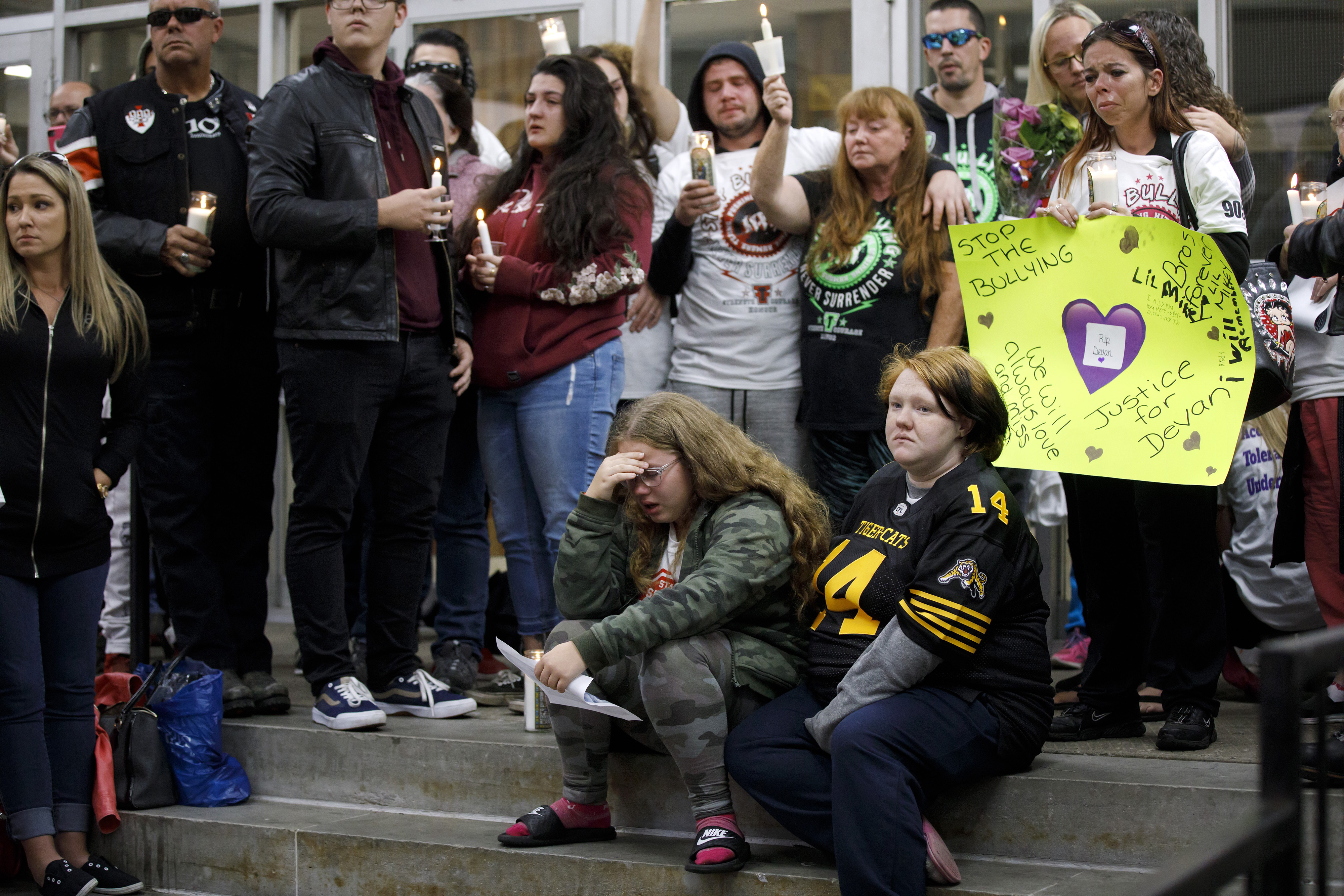
Many families lay the responsibility at the feet of what they call indifferent school administration and police. Schools and police, in turn, blamed limited resources—they were overwhelmed, stretched too thin, inadequately trained. Others felt that parents, as a whole, had become too lenient or negligent. Still more felt that Canadian laws for young offenders were toothless, and that kids were creating mayhem without any real consequence. A few told me that the city itself, as a whole, had become more violent, mainly because of drugs. Many blamed all of the above. But in the absence of any immediate and lasting solutions from the authorities, there appeared, suddenly, several people in the community willing to take the matter into their own hands.
The day after Devan’s death, Keven Ellis, a local who lived a five-minute drive from Churchill, reached out to Shari-Ann on Facebook, offering to help organize a candlelight vigil for her son and serve as the family’s unofficial bodyguard and media liaison. Ellis didn’t know the Selveys at all, but both his sons, now grown, had attended the school. He was, by day, an operations manager at Shu-Pak Equipment in Cambridge, Ont., which manufactures side-loading garbage trucks, but more pertinently, he was the founder of a volunteer organization called the 999th Legion for Child Rights, which for the past two years has dedicated itself to helping children escape abuse and bullying both at home and at school. Ellis had seen bullying become more common, uglier and violent in Hamilton, but Devan’s death had made its prevalence and severity grimly evident. And, like Shari-Ann, he believed that everyone was to blame. “We have collectively failed our children,” he said. “Every one of us.” The Selveys were grateful for the support and the sense of security—“Keven’s a great man,” Shari-Ann told me.
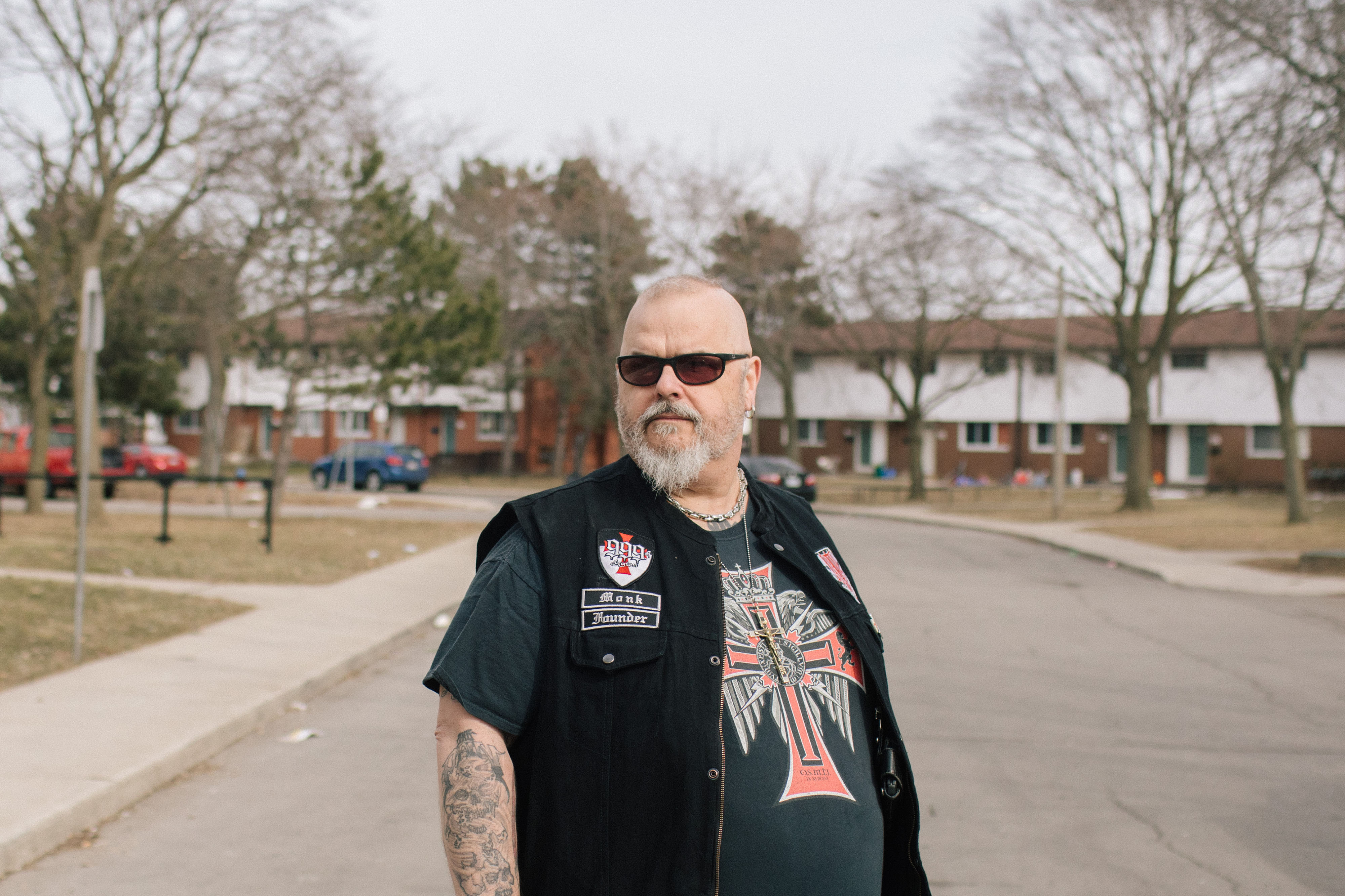
Ellis is 58 years old, built like a truck, and covered in a constellation of tattoos. He attended a Catholic school in Hamilton, where he was beaten routinely by both nuns and fellow students. When he got older and bigger—“a very rough biker-type guy,” in his words—he became a self-styled vigilante, first hunting down the people that wronged him, then seeking out and protecting other victims. After a few years, he rediscovered his Christian values and renounced violence. He opted instead for a kind of soft power, accompanying families to court, offering both protection and moral support. Over time, he formed the 999th, and in the last couple of years, Ellis estimates he’s helped about 100 kids by taking them to court, through donations of clothing or food and, more dramatically, through bully runs, where kids are accompanied from school to home by members of the 999th on motorcycles and given a black vest decorated with the group’s distinctive patches—“It’s like a comfort blanket or superhero costume,” he says.
Ellis looks fearsome, and when speaking to the public he occasionally takes on the fire-and-brimstone demeanour of an evangelical preacher. Up close, he’s surprisingly sensitive, articulate and vulnerable, still the damaged kid who was assaulted by the nuns. For Ellis, Devan’s death was an opportunity, an awful one to be sure, but an opportunity nonetheless. The 999th produced buttons and T-shirts, with purple lettering—Devan’s favourite colour—spelling out what the group called Devan’s legacy: “It stops right here with me!!! I am the line in the sand.” Ellis vowed that this was the last time this would ever happen to one of the community’s children, and he started to think of ways to make good on this commitment. “We don’t want to lose the momentum,” he told me. “I hate to use that term, but Devan started a boulder rolling. It’s hard to keep a boulder rolling. But if we let it stop, we’re done.”
***
In all my conversations with parents, the Hamilton-Wentworth District School Board (HWDSB) was a frequent target of their ire. The complaints were multifarious: violent incident reports were not being properly filed; the board spent money inappropriately—on artificial turf for high school football fields, for example—but nothing on security guards; there were only 30 social workers and 25 child and youth workers for a student population of 50,000. Indeed, from the minute that Shari-Ann Selvey levelled her accusations against school officials, the HWDSB seemed under siege. They responded tentatively, with bureaucratic language that satisfied no one. “Devan’s death was a senseless act of violence,” Manny Figueiredo, the HWDSB director of education, told me. “But I have seen how the school administration has responded to incidents that have been reported, and I’m confident in how they’ve responded. But I won’t deny that there are challenges in that school and that community.” When contacted directly for comment, Churchill vice-principal Tom Fisher did not respond, instead passing the interview request on to the school board. In writing, Figueiredo again disagreed with assertions made in this article, adding, “We are aware that violent incidents occur and are reported in our schools. We are committed to addressing each occurrence. Our schools are defined by staff, students and families who, each day, are responsible for creating safe learning environments to contribute to student success. This is our daily work and commitment. As the board anticipates being required to address them in a pending legal proceeding, its position will be advanced in that forum.”
Figueiredo said that the board would launch its own investigation of the incident, using an independent—so far, unnamed—third party, once the police had completed their homicide investigation. In the meantime, however, the board held a meeting on Oct. 28 to debate the formation of a Safe Schools bullying prevention and intervention review panel that would coordinate and gather feedback from the community about bullying and then produce a report for Figueiredo and the board of trustees. The board voted unanimously to approve the panel, at an estimated cost of $150,000, to be led by three experts. (These were not named until later, but now include three academics, all affiliated with McMaster University.) The panel was scheduled to provide its report this May. Given its objective, the board meeting began with a discouragingly aloof tone. But when school trustees began to ask questions, their sadness and worry reflected that of their constituents. They wanted to know the same things that parents wanted to know—what was being done now? “Kids are terrified to go to school now,” one trustee said. “My phone is ringing off the hook now.” The panel, many parents felt, was just going to tell them what they already knew: that their schools were too dangerous. They didn’t want more studies of the problem, they wanted action. How many other kids would be hurt, or possibly die, before May?
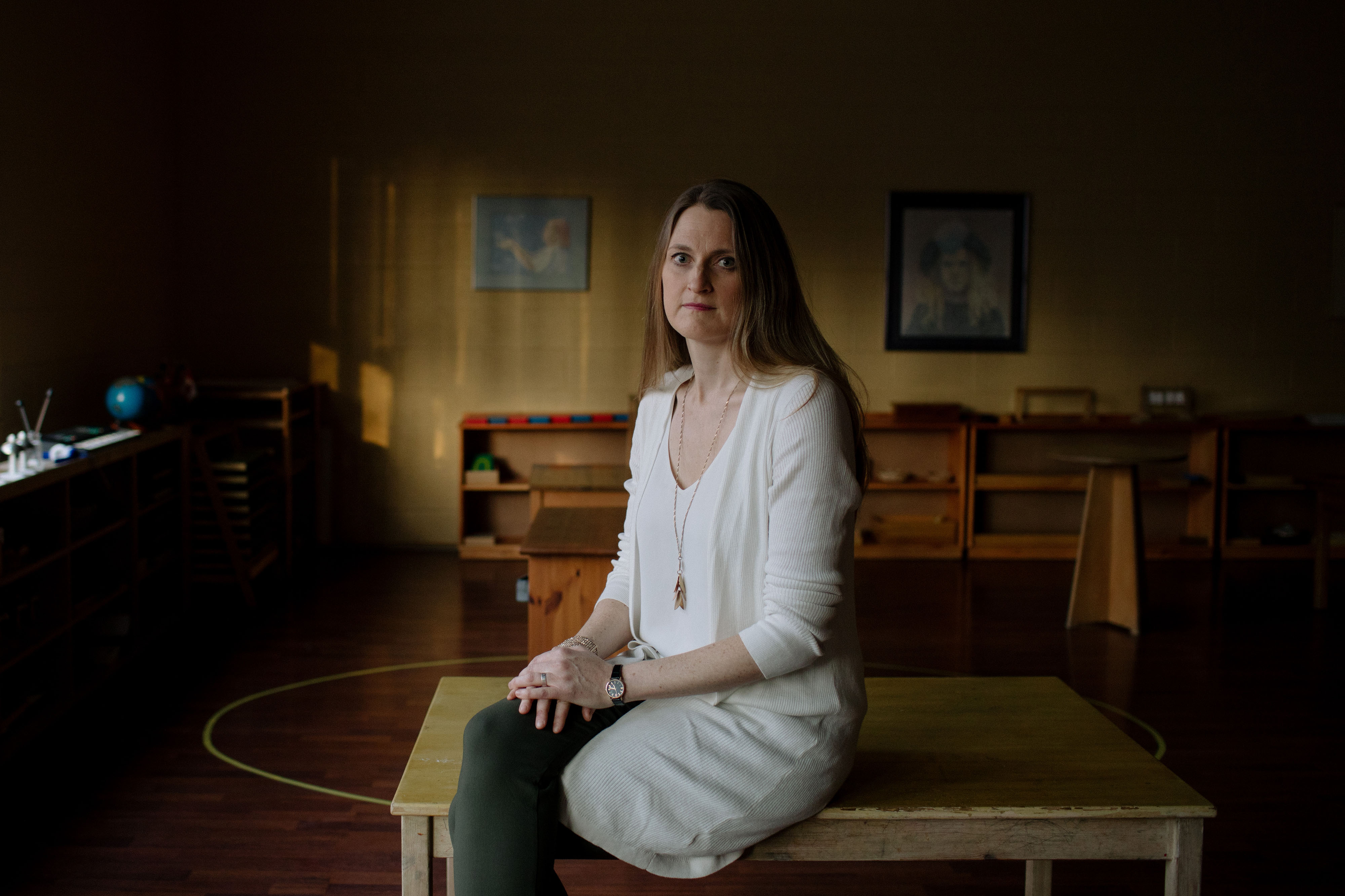
Voices Against Bullying (VAB), a parent advocacy group on the west side of Hamilton, in Waterdown, was born of such frustration. Formed in direct response to Devan’s death, it was a much different group than the 999th—its members were wealthier, better educated and arguably more fluent in political rhetoric. But their children had also been victims of bullying and they had likewise been stymied by a school administration that left them feeling powerless and alone. “It’s like the parents are silenced,” organizer Julie Schaafsma says. “They’re treated like they don’t have any options or say in the matter.” If the 999th provided families with immediate security and reassurance, VAB sought to help them navigate the system and, ideally, shape policy. While Schaafsma started the group, along with a local reverend named Ryk Brown and others, because she felt there was a lack of support available to parents, they quickly found strength in numbers. They partnered with other local organizations that had been grappling with bullying and children’s mental health issues for years—Nick’s Journey, Tree of Stars, Kids 4 Kids—and brought in educators from other boards to help them address what they perceived as deficiencies in the HWDSB: poor communication with parents and the public, insufficient resources, a sclerotic bureaucracy. “It took a village to create this problem,” Brown says, “and it’ll take a village to solve it.”
One member of VAB, who sat on its steering committee, appeared to offer at least one effective solution. Kathleen Hilchey, an educator and anti-bullying specialist, taught for 10 years in the Grand Erie District School Board, at both elementary and secondary levels, and was also an expert in conflict management and mediation. At her own school she was given the freedom and resources to develop programs for both bullies and the bullied. In the former, she created a safe space for aggressors to talk, learn, explore and problem-solve. With those being bullied, using techniques she called the Third Way, she helped students develop assertiveness and create, without adult intervention, their own solutions. “A person being bullied usually is quite compassionate,” Hilchey says, “and so their solutions are kind. They care a lot about the kids who are hurting them, and that seems to stop the cycle.” After the programs were implemented, she says, her school had only one repeated incidence of bullying.
Last September, she started her own private coaching and training business, and Devan’s death meant she was teaching (albeit unhappily) a whole new roster of clients about conflict management strategy: principals, guidance counsellors, psychotherapists. She had spoken to the HWDSB and she was impressed both that the board had introduced new “emotion coaching” training for staff and by the calibre of those running the Safe Schools panel. But she was nonetheless cautious about how much the board could really do in a society where bullying was rampant not just in schools but also in workplaces, on sports teams and in nursing homes; a society where most people are ill-equipped to manage conflict; a society that still demanded, above all, punitive justice. “We have generations upon generations of people that still see this as the truth,” she says. “But I’m saying: a person who’s been victimized is not weak. They actually have the answer. Think about how many systems don’t believe that.”
***
I met Shari-Ann Selvey for the first time in early November, at a Tim Hortons a short drive from her home. She was a short, 51-year-old with flame-red hair that reached down the length of her back. She had abundant freckles and emerald eyes. Her nails were painted purple. She no longer travels alone anywhere, she said, and had brought along her sister-in-law from her first and only marriage. She never married Devan’s father, Edward Bracci, known as Ted, and he hadn’t been involved in their son’s life for years, she said.
Shari-Ann had lived in the neighbourhood as a kid, before moving up to the Hamilton Mountain. Her father was a taxi driver, her mom a caretaker at the school board. Her life had been one of relentless hardship. When she was 14, she was raped, and a couple years later, her beloved older brother died. She lost interest in school, drifting between odd jobs. After the rape, doctors told her she could never have kids. But at 26, she became pregnant with twins: Karissa and another girl she named Kelli. Kelli died three days later. A year later, she was diagnosed with cervical cancer and, after parts of her cervix were removed, she was told again that she could have no more children. Then, when she was 36, she was hospitalized with the flu, and discovered she was pregnant with Devan. “All my children are miracle kids,” she said. “But I don’t know why I had to lose two of them.” In 2006, she moved back to the neighbourhood, to Lang Street, a knot of public housing in the shadow of the Red Hill Valley Parkway. She was on disability, having been injured on her last job at a dry cleaners.
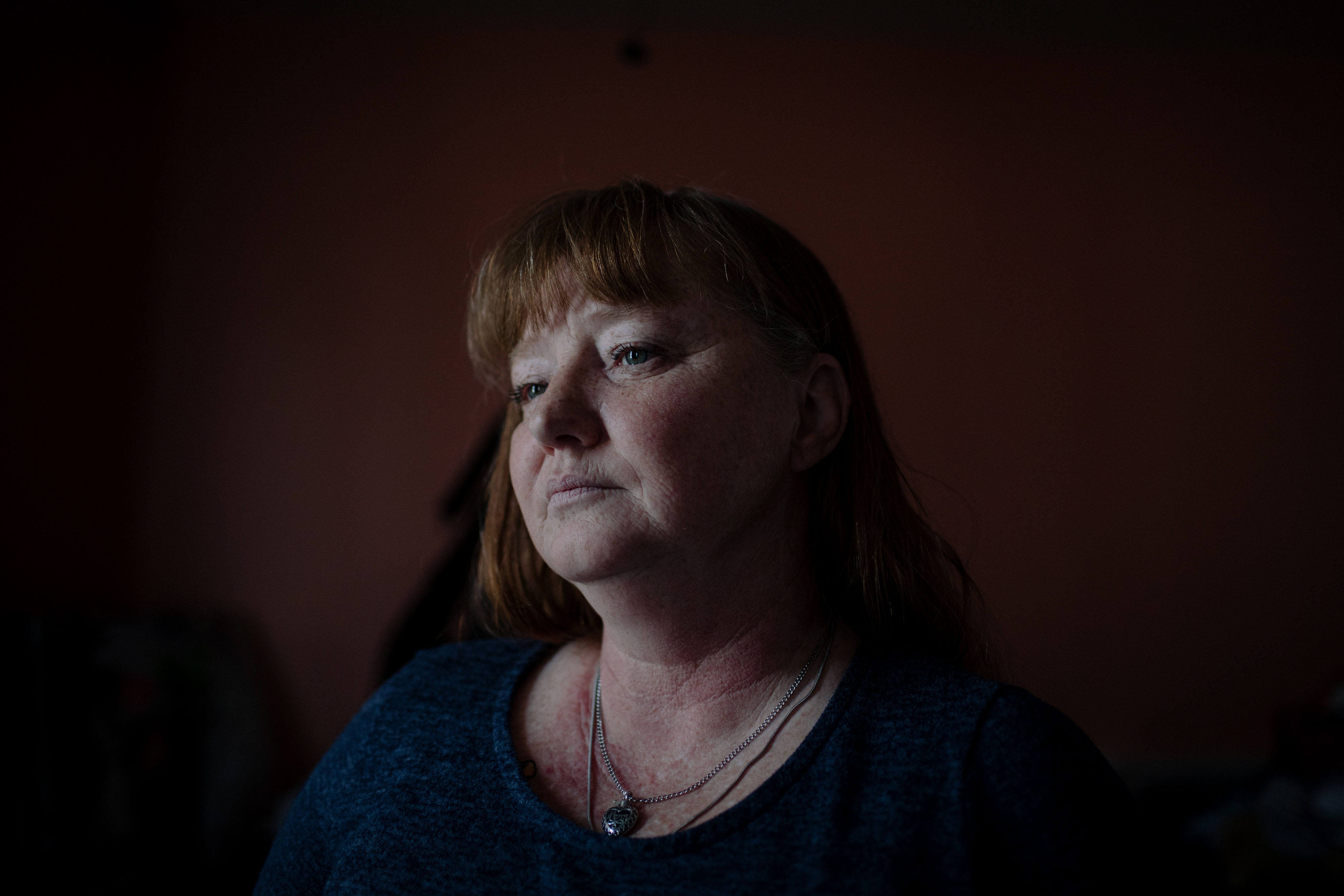
Shari-Ann is wry and tough-minded, and when she talked about her son, she beamed and told funny stories, obviously proud of the quirky kid she’d raised. But the last month, of course, had curdled everything. She could barely sleep because, every time she shut her eyes, she saw Devan die. She no longer cooked because that was what she’d always done with Devan. She was furious with the school, the police, the kids that had robbed and threatened Devan, who she argued were at least partly responsible for his murder, and who still hung out at the traffic-circle Timmys.
“More were involved,” she said, “and more should be paying the price. They should not be walking around, getting up to eat, going to school. They took all that away from Devan. So why do they have rights to it? I’m frustrated and I’m mad and I’m crushed.” She wanted the laws for young offenders changed, so that kids as young as 10 years old would be more severely punished. She wanted parents held legally responsible for their children’s criminal behaviour. In a life full of tragedies, she needed to find purpose in this one. Above all, she wanted recognition of the fact that her son’s death was hardly an isolated crime, and that its effects continue to radiate far beyond that unbearable Monday. Devan’s girlfriend, Danielle, was consumed by her own anguish and anger, clearly suffering from PTSD. “I know my daughter’s still there,” her mother, Laurie Dennison, told me, “but she’s not the same. She never will be.” Danielle defiantly continued to go to Churchill, even after other students began to threaten both her and another one of Devan’s friends.
As if to sharpen Shari-Ann’s point, toward the end of our interview, her cellphone rang. Her mother had been having seizures after the murder, and had gone into a coma. Then, as we were sitting there at that Tim Hortons, she had suddenly died. Shari-Ann gasped, and, with her sister-in-law following, rushed out of the coffee shop. “F–k my life,” she said, choking up. “I can’t catch a break.”
From Shari-Ann’s perspective, things would then get even worse. About a month after we met, the Crown dropped the first-degree murder charge on the 18-year-old who had brought the mace. There was, the Crown said, no reasonable prospect of conviction. While new charges were laid—assault with a weapon, administering a noxious substance, possession of a prohibited weapon—he was soon free on bail. His family held a homecoming party a half-hour walk from Shari-Ann’s house. Those close to the Selveys, and the other kids who had allegedly suffered at the hands of these teens, were outraged and saddened. On Facebook, there were again calls for “street justice.” One mother sent me a message that read, in part, “they are letting a Menace [sic] back on to the streets.”
***
At the school board meeting, Shari-Ann met a couple of other parents who told her that their 16-year-old son, a former Churchill student, had also been bullied and eventually assaulted by Devan’s alleged murderer a year earlier. They claimed that he had used the same knife on their son, holding him down and cutting his arm so deeply that the wound required 14 surgical staples to close. The boy had been told not to tell anybody and he didn’t, even after he had moved to a different school. But after Devan was murdered, he realized those same kids had replaced him with another victim. If he’d spoken up, he said, maybe Devan would still be alive. (A couple months later, Devan’s assailant appeared in court again to face the alleged-assault charge.)
One morning in November, at the Hamilton courthouse, I joined the family of this boy. He had, a couple years prior, been robbed and assaulted by a different group of teenagers, and two of them were on trial that day for the crime. They were found guilty. One of those same teens, who is now 17, was also at the arena the day that Devan was murdered, though his father told me that his son was only a “bystander” and a “witness.” The teen didn’t help his case much when, after the 18- and 14-year-old were arrested for Devan’s murder, he posted a video on Snapchat in which he urged the police to “free my n–gas.” (The 17-year-old, as well as the teens who were arrested, is white.)
This teen’s father was an affable, bearish, middle-aged man who, of course, held a different opinion of his son’s behaviour. Our entire conversation, in fact, provided a kind of counter-narrative, one that seemed at times a welcome corrective (here was just another parent unable to handle a teenager adrift in a confusing, turbulent culture), but also a tale of blameless justification. His son, he said, had fallen in with “the wrong people,” had a learning disability and trouble with drugs but was now “changing his life around.” He and the boy’s mother split up when their son was two years old, and now that the mother no longer lived in the city, the boy and his dad shared a basement apartment not far from Churchill. The school, the father said, could be violent—almost every single person in that school carries a knife, his son told him—but he’d confiscated the weapon his son owned: “He said, ‘Dad, I need it for protection.’ I told him, your protection are these two things right here.” He held up his fists.
When I asked if his son had ever used those two things on him, he said yes. He had even left marks. But the father wouldn’t hit him back, he said, because he didn’t want to hurt him. “My friend told me I’m a pussy and my kid needs to be punched out,” the father said. “And I’m like, yeah, he does, but not by me.” While he wouldn’t describe his son as a bully, he did acknowledge that bullying was a problem, both in the schools and the city at large. And the problem, maybe, was that parents couldn’t punch out their kids. “It all boils down to the fact that we can’t punish our kids properly anymore,” he said. “The system is too lenient. Nowadays, the parents can’t do anything and the kids know this.”
The father knew the Selveys a bit—he played ball hockey with one of Devan’s half-brothers—and he was clearly sympathetic to Shari-Ann’s loss. But he was just as concerned with how his family’s reputation had been marred. He works as a dispatcher for trucking companies and said that he was “losing jobs, right and centre, because everyone thinks my son’s a murderer.” There was also an anonymous Facebook account that had identified him and his son, as well as Devan’s assailant and his parents. The account infuriated him. In the end, he wanted me to know that, as awful as Devan’s murder was, there was pain all around. The family of the 14-year-old was devastated, too, he said. The 18-year-old, he said, was a good kid, someone who, even after all this, he would happily welcome into his own home again. “I feel sorry for both sides,” he said. “I feel more sorry for Ted and Shari-Ann because they lost their son, but I feel sorry for both sides.”
In a way, so did Keven Ellis. Like Kathleen Hilchey, he also works with both the bullied and the bullies. He knew that the bully’s behaviour almost always stemmed from some trauma, abuse or neglect. When he could, he tried to help them, too, tried to figure out what support they needed. So, when the father of the 14-year-old reached out to him over the holidays, asking to meet, he agreed. This father, too, wanted his side of the story known. Though the father had his own criminal past, he told Ellis that he had turned his life around. He also felt that, despite the alleged crime, there was still hope for his son. (The father’s attorney—John Rosen, best known for having been Paul Bernardo’s lawyer—wouldn’t let me speak to his client, nor would he provide on-the-record comment.) After talking with the father, Ellis agreed to help the boy, after he served whatever time he would serve. “Whatever he needs to get on track,” Ellis said, “to put his life back together, to become a good, contributing partner to our community.”
The 999th had grown to 2,000 members and was getting an average of two requests a day from parents seeking help, some from as far away as British Columbia. “I’m always the first one to say, I don’t know how much we’re helping,” Ellis told me. “There’s no end to it. There’s just a constant flow.” There was definitely a lot more awareness around bullying, and more people were sending him video footage of new altercations, but it was difficult to tell if actual incidents of bullying had decreased or not. Ellis kept trying different things. He organized a town hall for community members to share their stories of bullying. With Conservative MP David Sweet, he initiated a petition for the government to immediately review the Youth Criminal Justice Act. He hosted a benefit concert featuring a Tragically Hip cover band, the Practically Hip. He went on bully run after bully run.
Meanwhile, the Ministry of Education announced five new measures to combat bullying in Ontario schools, including a review of school reporting practices and training in de-escalation techniques. By the beginning of the year, the Voices Against Bullying Facebook group had more than 2,500 members. Hilchey was offering Third Way facilitator training to a large group that included psychotherapists and police officers, and she planned a parent workshop in April. The HWDSB panel was just starting its Safe Schools panel sessions—over the coming months, it would host 15 different sessions, with many geared toward specific marginalized and ethnic groups. Nobody wanted the boulder to stop.
***
On Jan. 1 of this year, Devan would have turned 15. In a sombre celebration, Karissa made a Lightning McQueen cake, and the family brought it up to Shari-Ann’s niece’s house. They took flowers to the spot where he died. That was it.
A couple weeks after Devan died, Karissa had a baby, her first, and she named her Maisie Devan. They kept his memory alive in other ways. Devan had been cremated and his ashes placed into silver, dolphin-shaped pendants that Shari-Ann, Karissa and Danielle wore. Up on Shari-Ann’s left arm, she already had a tattoo of her brother’s face, but then she got one of Devan on her forearm, the image reproducing a photo taken at the Bedrock Bistro—Shari-Ann’s favourite picture of him. In the original, Devan hides a sly smile with his hand, and he’s sitting with Karissa and Shari-Ann. Now, on his mother’s arm, it was just his face alone.
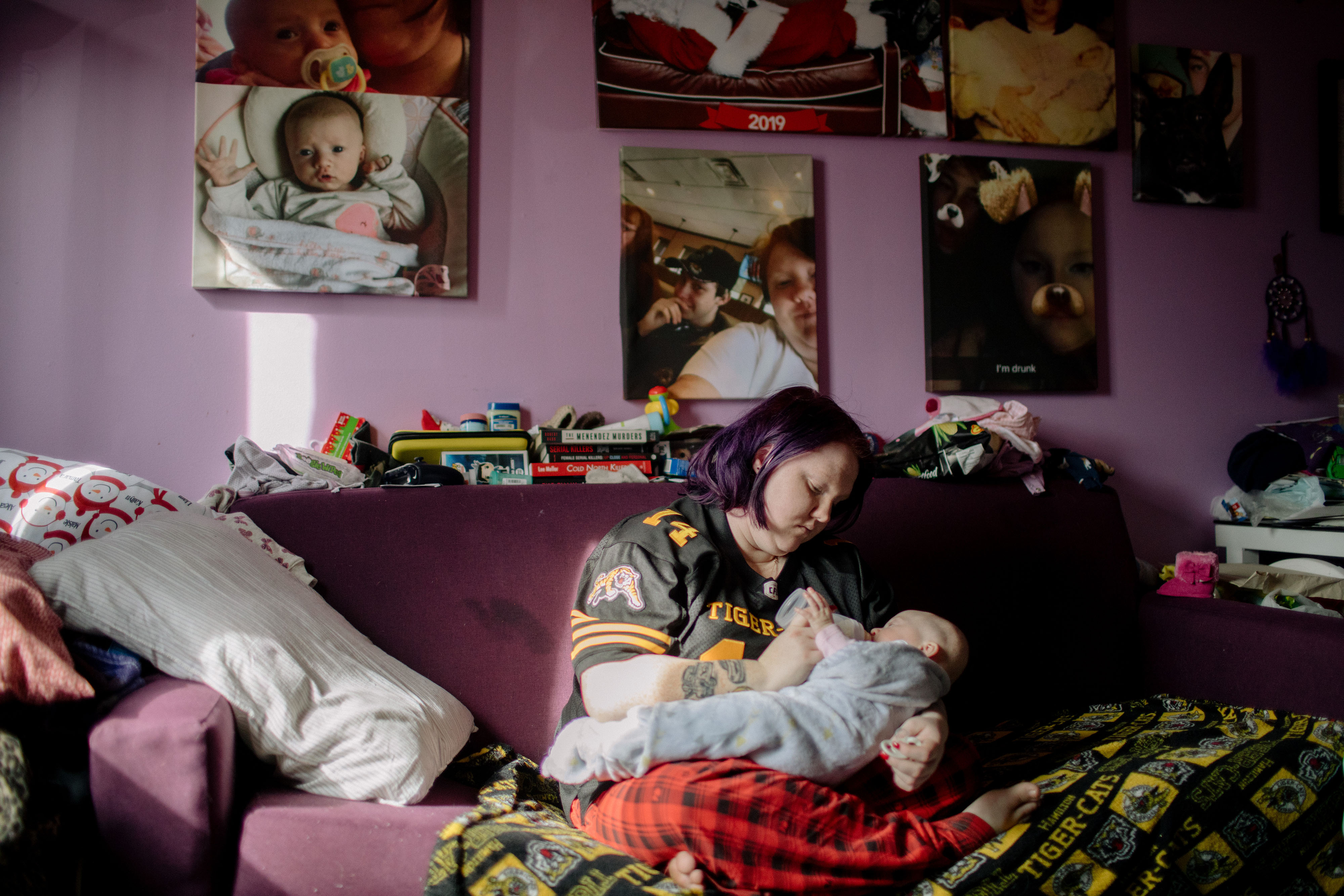
In mid-January, when we met again, Shari-Ann seemed frailer. Her red hair was dulled by grey; she frequently burst into coughing fits, a result of the stress, she said. She was waiting for the HWDSB panel to start but also, more importantly, the trial. Thanks to a backlog of cases, it was delayed until January 2021. And who knew what justice it might really bring?
It was bittersweet, everything that had happened. Things seemed to be changing, maybe even getting better. There was momentum. But it was too late for the Selveys. Devan had become the inadvertent martyr of an anti-bullying movement, and Shari-Ann had become its reluctant face. She couldn’t walk into a Tim Hortons without people turning to stare, couldn’t shop at a Walmart without the greeter expressing sympathy. To her disgust, people actually wanted to take selfies with her.
At Devan’s funeral, held the weekend after his death at Stoney Creek United Church, Reverend Mark Winger told mourners that, “What happened on Monday doesn’t define you. Your response to what happened on Monday defines you.” This was—and wasn’t—true. Many lives had been shattered in that moment. And while some had begun to put the pieces back together, many were still trying to figure out which piece went where. Shari-Ann told me that she “had to find her voice for Devan.” I wasn’t quite sure what she meant. That she needed to speak for him? Tell his side of what happened? “All of it,” she said. “Because I can’t let it happen to another kid. Because no other family needs to go through this. I don’t know how I can help that, but I got to make sure that I’m out there and people don’t forget.” She paused, looked into nothing. “It stops me from crumbling. If I crumble, I’m useless to everybody.”
This article appears in print in the April 2020 issue of Maclean’s magazine with the headline, “Hamilton’s bullying crisis.”